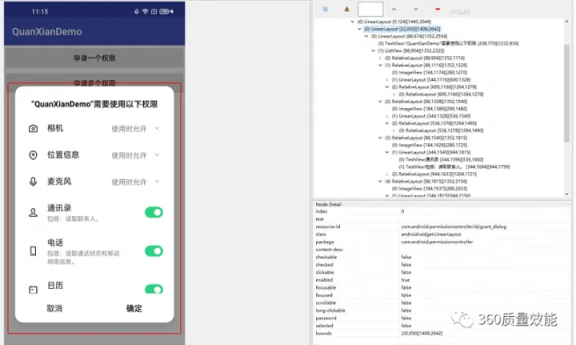def get_possible_input(view_list): possible_events = [] enabled_view_ids = [] touch_exclude_view_ids = set() for view_dict in view_list: if view_dict['enabled'] and \ view_dict['resource_id'] not in \ ['android:id/navigationBarBackground', 'android:id/statusBarBackground']: enabled_view_ids.append(view_dict['temp_id'])
for view_id in enabled_view_ids: if view_list[view_id]['scrollable']: possible_events.append(ScrollEvent(view=views_list[view_id], direction="UP")) possible_events.append(ScrollEvent(view=views_list[view_id], direction="DOWN")) possible_events.append(ScrollEvent(view=views_list[view_id], direction="LEFT")) possible_events.append(ScrollEvent(view=views_list[view_id], direction="RIGHT")) elif view_list[view_id]['clickable']: possible_events.append(TouchEvent(view=views_list[view_id])) touch_exclude_view_ids.add(view_id) # elif views_list[view_id]['enabled'] and \ # views_list[view_id]['focusable']: # possible_events.append(TouchEvent(view=views_list[view_id])) return possible_eventsfor view_id in enabled_view_ids: if views_list[view_id]['scrollable']: possible_events.append(ScrollEvent(view=views_list[view_id], direction="UP")) # possible_events.append(ScrollEvent(view=views_list[view_id], direction="DOWN")) possible_events.append(ScrollEvent(view=views_list[view_id], direction="LEFT")) possible_events.append(ScrollEvent(view=views_list[view_id], direction="RIGHT"))
for view_id in enabled_view_ids: if views_list[view_id]['clickable']: possible_events.append(TouchEvent(view=views_list[view_id])) touch_exclude_view_ids.add(view_id)def filter_possible_input(possible_events,origin_dim=[1080, 1920]): filter_events = [] for event in possible_events: # 过滤坐标为负的值 bounds = event.view["bounds"] bounds = [bounds[0][0], bounds[0][1], bounds[1][0], bounds[1][1]] x_min = max(0, bounds[0]) y_min = max(0, bounds[1]) x_max = min(origin_dim[0], bounds[2]) y_max = min(origin_dim[1], bounds[3]) if x_min >= x_max or y_min >= y_max: continue # 更新bounds坐标点 event.view["bounds"] = [[x_min,y_min],[x_max,y_max]]
# 过滤小于5个像素的event if (y_max-y_min) < 5: pass else: filter_events.append(event)
return filter_events












评论